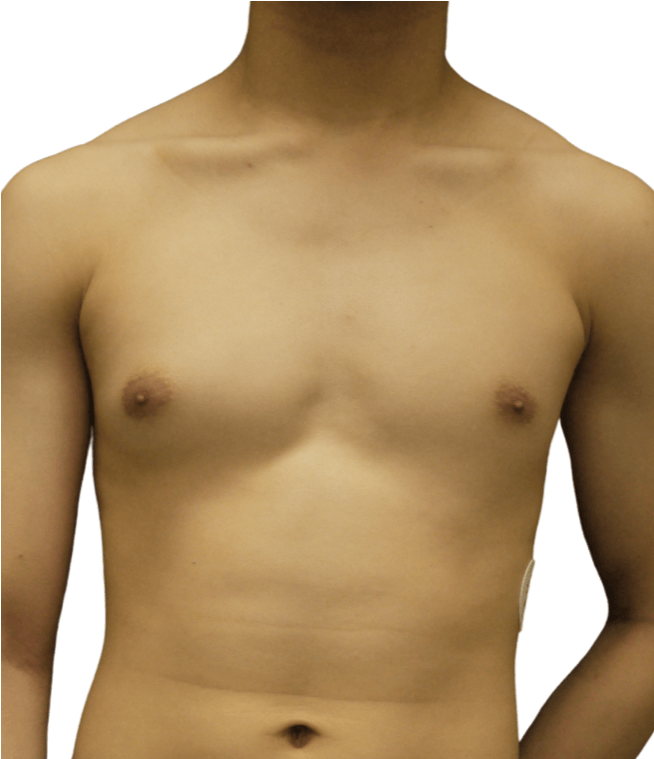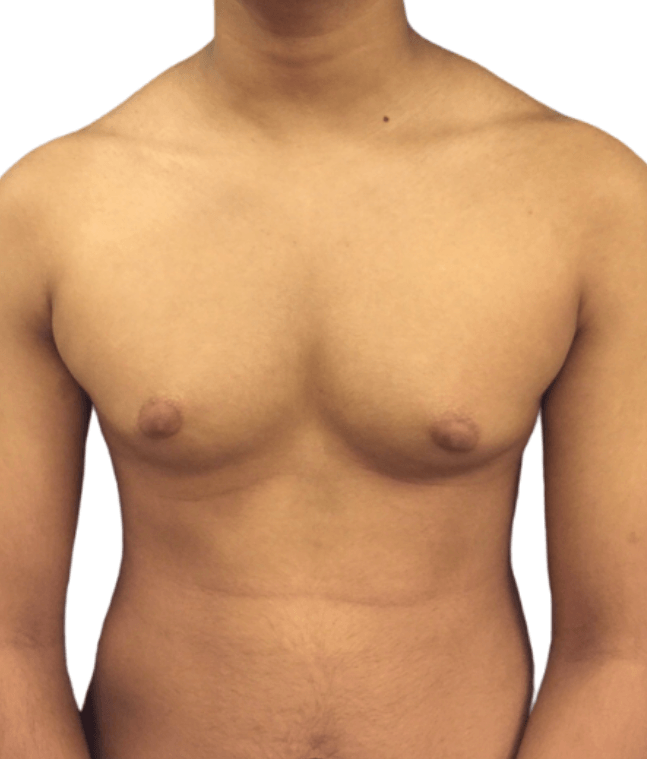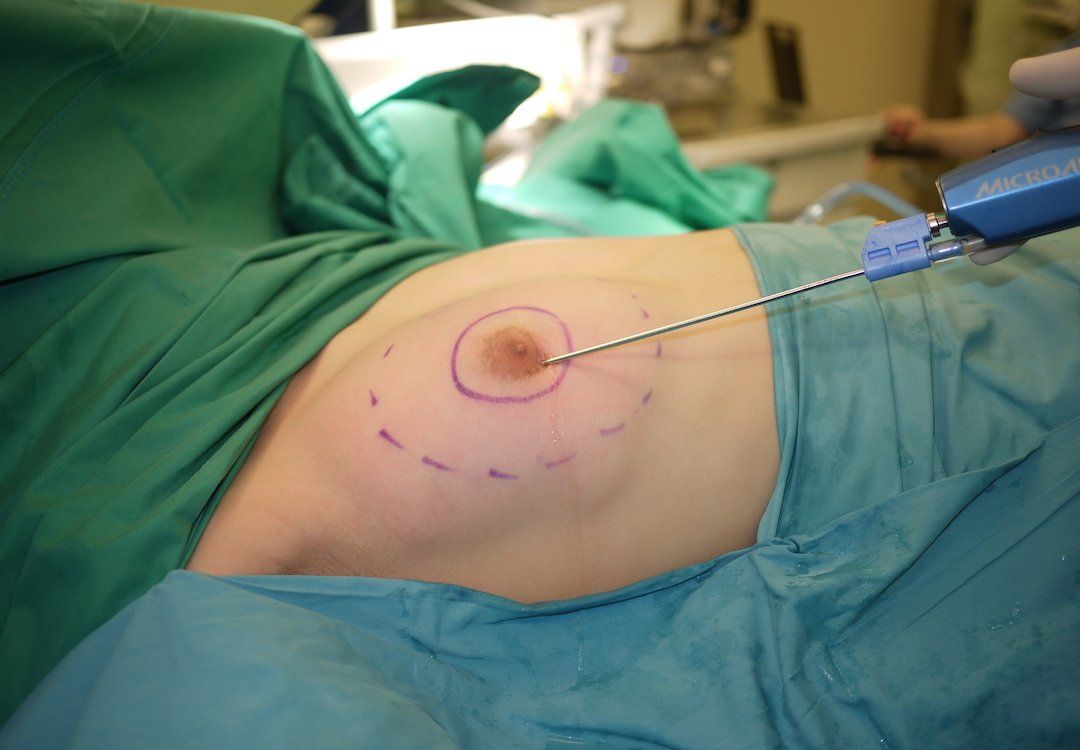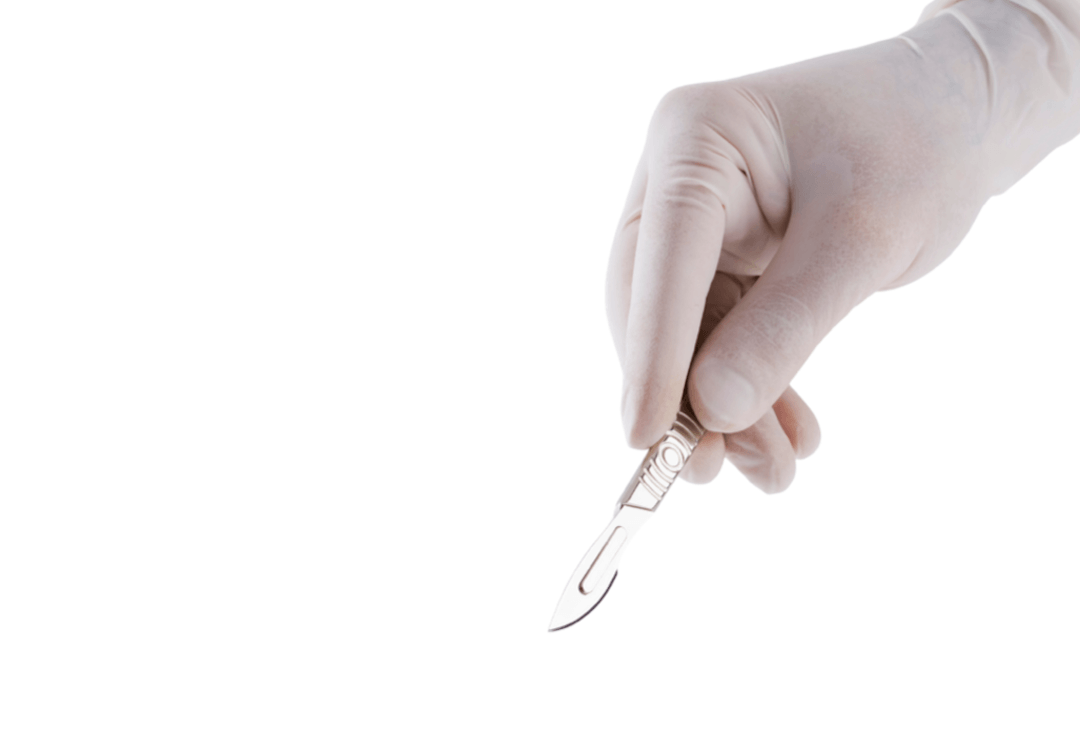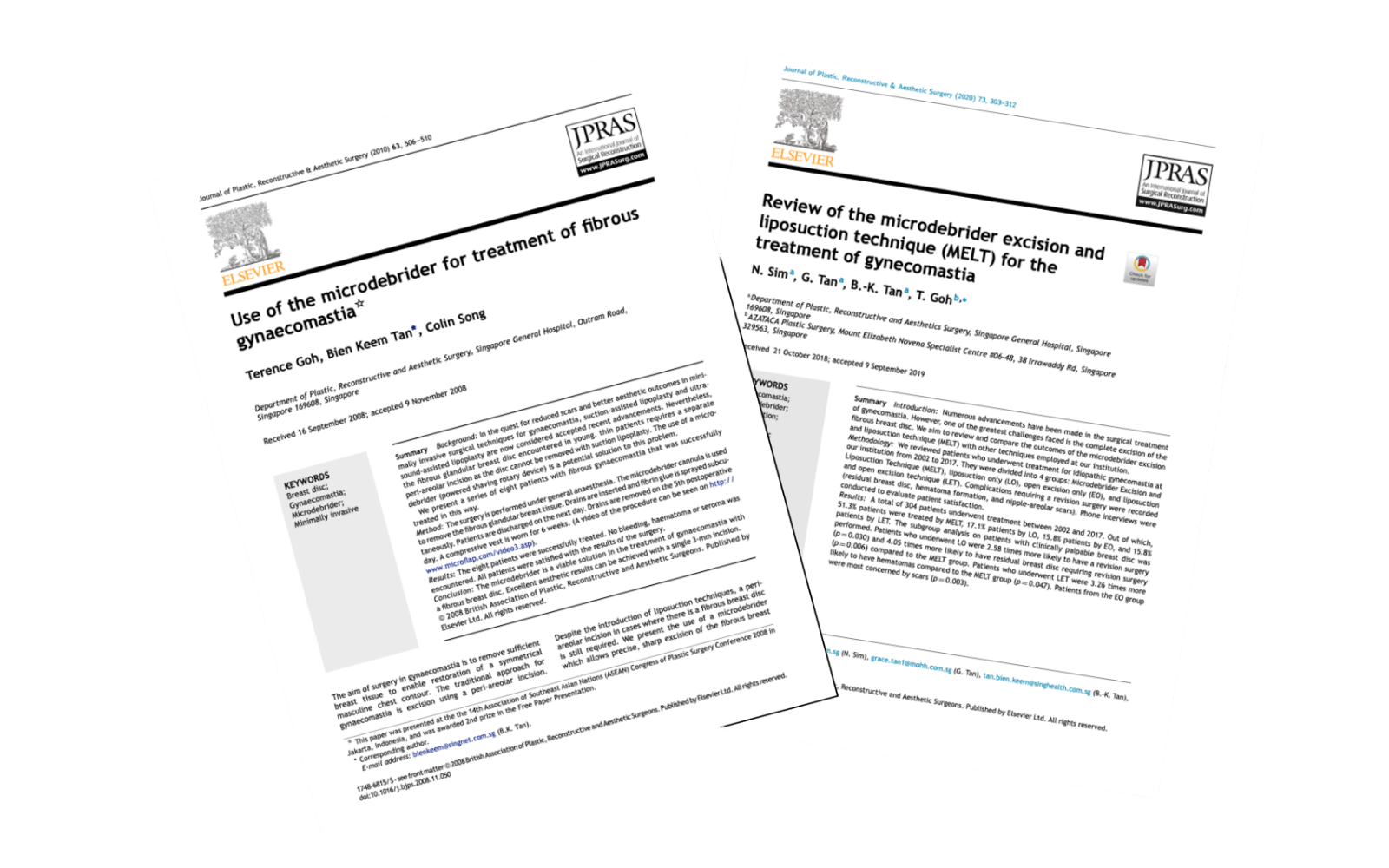BOOK A CONSULT TODAY
+65 67788-648
ROYAL SQUARE MEDICAL CENTRE
101, IRRAWADDY ROAD #14-09
AZATACA PLASTIC SURGERY CENTRE (ORCHARD)
MOUNT ELIZABETH HOSPITAL
3, MOUNT ELIZABETH ROAD #15-11
Follow us
Gynaecomastia is a frequently overlooked problem for many males
More commonly known as man boobs, this can be a distressing experience for men, affecting their self-esteem and confidence in their body image. It is often unspoken of, yet it affects around 20%-30% of men.
Gynaecomastia refers to women-like development of breast due to either abnormal fat distribution or over development of fibrous breast glands. This is due to the body's response to the imbalance of hormones. This is commonly developed during puberty and will usually disappear once the patient's hormones levels have normalised. However, in certain individuals, the tissues do not atrophy after maturity and the fat and glands remain permanently.
GYNAECOMASTIA CAUSED BY AN UNDERLYING MEDICAL CONDITION AND SYMPTOMATIC GYNAECOMASTIA MAY BE ELIGIBLE FOR MEDISAVE OR INSURANCE COVERAGE
Gynaecomastia can cause unnecessary mental distress, loss of confidence and create awkward social circumstances
Who is a candidate for Gynaecomastia Correction?
- Male patients with prominent breast glands
- Male patients with sagging breast or excessive sking after massive weight loss
- Male patients with asymmetrical breasts
- Male patients with protruding areola
- Male patients with prominent areola
WHAT ARE THE TYPES OF GYNAECOMASTIA?
True gynaecomastia is fibrous. Surgical removal is the only solution.
Predominantly breast fatty tissue
This is pseudogynaecomastia and not true gynaecomastia where the protuberance is mainly fat. This can be contoured with liposuction procedures and does not require cutting procedures.
Predominantly breast glandular tissue
This is true gynaecomastia (right chest) where there is prominent breast disc and removal of the fibrous breast disc can only be performed effectively with a sharp cutting insturment.
Hybrid type- combination of both
Combination or hybrid gynaecomastia is probably the most common and requires both liposuction techniques to remove the fat and sculpt the chest, as well as sharp cutting methods to remove the gland.
What are the surgery options?
Breast liposuction using traditional techniques yield rewarding results in treating pseudo-gynaecomastia that is caused by accumulation of fatty tissue. However, in patients with a fibrous breast gland, liposuction alone can leave behind a prominent mound which can lead to awkward circumstances.
Sharp removal of the breast gland (mastectomy) is the only surgical solution when there is a fair volume of gland tissue. The fibrous gland tissue cannot be removed by liposuction alone. This can be done using a direct 2-3cm incision which can be hidden along the areolar margins or using a more refined technique where remove is done through a small 0.5cm incision with the use of expert instruments.
See MELT below.
MELT Technique
Microdebrider Excision and Liposuction Technique
MELT (Microdebrider Excision and Liposuction Technique) is an approach we developed while I was at Singapore General Hospital (SGH). It is a hybrid technique that includes both liposuction for sculpting of the chest and the use of a microdebrider for removal of the fibrous breast glands. This technique can be performed through a small 5 mm incision which is hidden within the areolar skin.
We have been using this technique with good results over the last 10 years and we have published our 10 year results in scientific peer-reviewed plastic surgery journals. (Click on the paper below to download the articles)
We have been using this technique with good results over the last 10 years and we have published our 10 year results in scientific peer-reviewed plastic surgery journals. (Click on the paper below to download the articles)
Why is the MELT a preferred technique for my patients?
01 Small Scars
Use of the microdebrider allows us to perform a subcutaneous mastectomy and removal of the gland through a small incision which heals very well.
02 Sharp Excision
The microdebrider is a sharp cutting tool used for cutting bone and cartilage. This allows us to perform maximal sharp cutting through a minimal sized incision.
03 Symmetry
During the entire process we have visualisation of both chests and there is no open incision and less distortion, hence allowing a better appreciation of symmetry, reducing the incidence of over-resection or remnant breast disc.
Areolar Reduction Surgery
The areolar of a patient with enlarged breast glands or excess fat can be large due to the increase in tissue volume. In most cases, removal of the fat and gland, will lead to the overlying skin retracting and also the areolar getting smaller.
However in certain cases, if there is a lot of excessive skin, there may be a need to cut away the excess skin. This is usually only needed in severe cases where patients have undergone massive weight loss.
Getting Gynaecomastia Correction Right
01
Pursue a masculine silhouette
Liposuction without removal of the breast gland will leave behind a flat chest with a protuberant breast disc, whilst removal of the gland without removal of the fatty tissue would leave behind a chest that is not masculine. The combination of the two helps to create the foundation for a masculine profile so as to achieve confidence.
02
Stealth incisions and small scars to hide any evidence of surgery
One of the objectives of gynaecomastia surgery is to avoid attention to the chest and having unsightly scars defeats that purpose. That is why we invented the MELT which allows us to remove the breast tissue through stealth incisions. Direct incisions where applied have to be cloesd meticulously and followed-up closely with creams to minimise problems with scars.
Hospitalisation
Day Surgery
Anaesthesia
General Anaesthesia/
Local (only for open excision)
Operation Time
30-60 minutes
Removal of Sutures
Absorbable stitches
Patients are advised to wear a compression vest for 4-6 weeks. This will help to reduce bruising, bleeding and swelling in the early days and reduce swelling and contour the chest as you recover.

